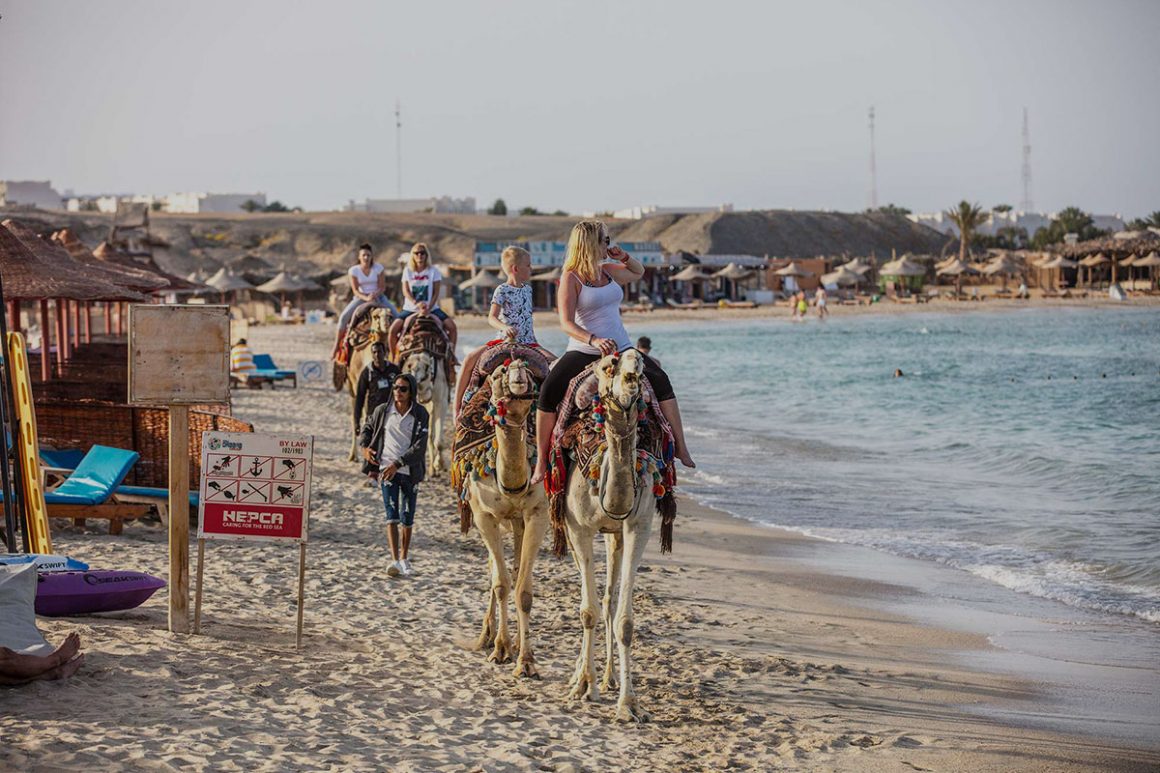By early 1990s, the city was realized to have an enormous tourist potential. Therefore, an International Airport was inaugurated in addition to a 220 km road that connects the city with the ancient Egyptian temple of Horus at Edfu. The area became a highly recommended tourist destination, connected with other destinations in Egypt; Red sea, Cairo, and several Upper Egyptian cities
Weather
The city enjoys an exceptional climate with almost no rainfall. The perfect warmness in winter attracts visitors to the city. They can experience an ideal summer where the hot weather is tempered by the sea breeze. Winds blow for few days during each month of the winter season. These winds can generate some dust, but not the “Lawrence of Arabia” sand storm. Patchy clouds in summer with increase in humidity are observed.
Wadi Hammmamat
The exact dating of the area is not clear. But, several rock carvings and paintings from the site dates to the early dynastic periods in Ancient Egypt. These inscriptions were discovered in the mid-way between El Quseir and Qena, at Wadi Hammamat (Valley of Baths). This route was used for trade purposes between the historical capital for Ancient Egypt, Luxor, and Red Sea.
Wadi El Gemal
During the reign of Ptolemy II, he ordered the construction of a road linking Marsa Alam with Edfu for the mining expedition near the Red Sea, and fares to the Nile for onward shipment. This route passed through the modern “Wadi el Gemal” (Valley of the Camels) National Park.
Roman continued mining semi-precious stones, copper, lead, gold and emeralds from the site. Far to the south, at Wadi El Gemal National Park several evidences were discovered belonging to Queen Cleopatra. Some coins from the reign of Emperor Nero (first century AD) were discovered near Marsa Alam. During this period, the city was a part of (Smaragdus Mons) The Emerald Mountains as recorded in the Roman documents.
El Quseir
Later, Muslims used this route and port for the Pilgrimage to Mecca. The Ottomans, during the 16th Century AD, particularly Sultan Selim I, built an impressive Fortress as a military stronghold to protect the city against invaders. In addition, the French and British colonialists used the city as a key port to control trade with the Arabian Peninsula. The Fort witnessed several battles between the British and the French armies, until in 1801 British General Baird, could dominate the city. The fort which is visited nowadays and includes several small exhibits of the area’s history, Bedouin life and traditions.
Divers find the city an ideal environment to practice their underwater hobbies, and enjoy the breathtaking underwater scenes. These include spinner dolphins, green turtles, hawksbill turtles, several species of shark are found along its coast as well as myriad varieties of colorful corals and fish.
Recommended Diving Sites
Summer of nearly 30 degrees is preferable to divers, while winter months have higher wind speeds and rougher seas. Marsa Alam is rich in diving sites, and the following table shows the best-recommended sites with details about each:

